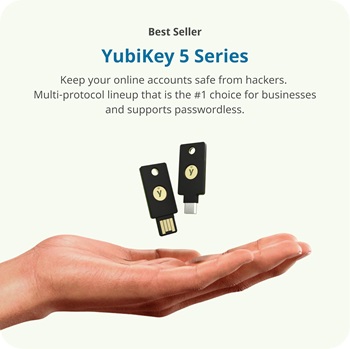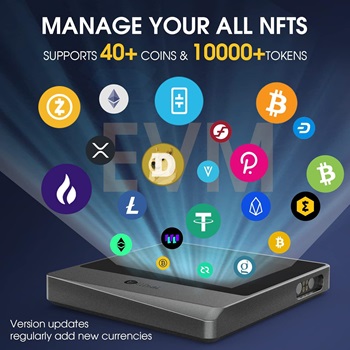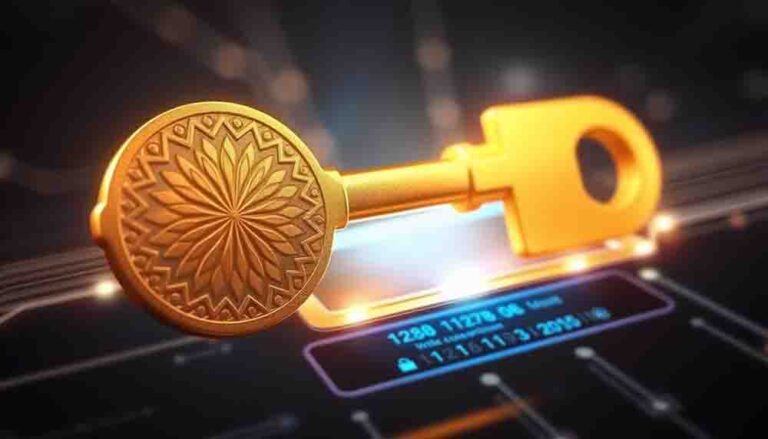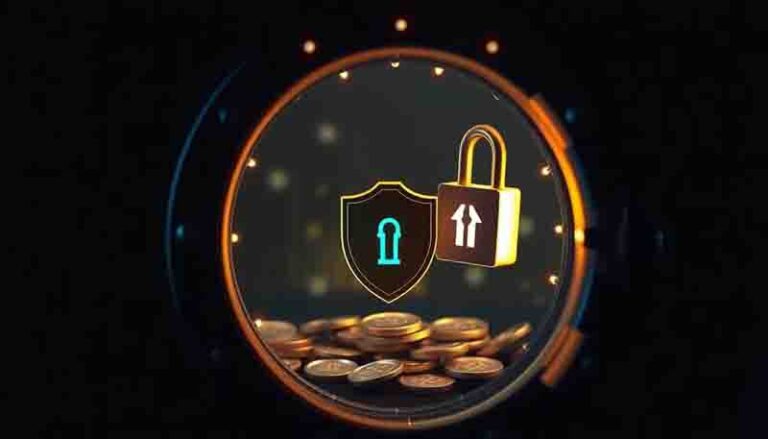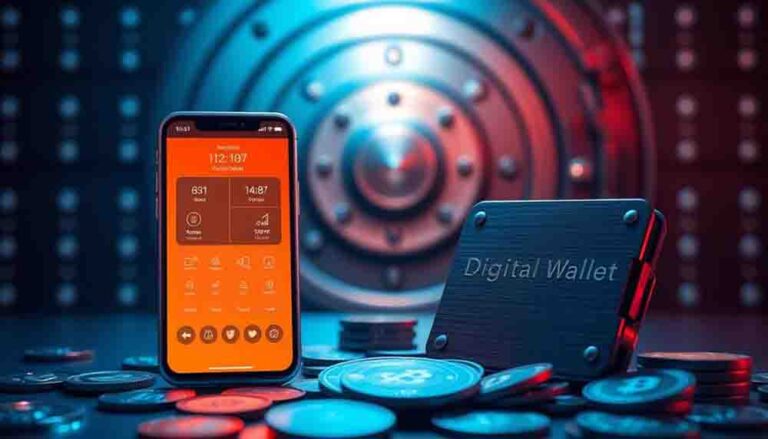10 Tips: Custodial Vs Non-Custodial Crypto Wallets Explained
Note: This post may contain affiliate links, and we may earn a commission (with No additional cost for you) if you make a purchase via our link. See our disclosure for more info. The crypto world is constantly changing. This content is for informational purposes only and not financial, legal, or professional advice So, please verify the info on the cryptocurrency provider’s websites.
As you navigate the world of cryptocurrency, you'll inevitably face an essential decision: choosing between custodial and non-custodial wallets. This choice isn't just about where you store your digital assets; it's about balancing control, security, and convenience. Whether you're a novice trader or a seasoned investor, understanding the nuances of these wallet types can markedly impact your crypto experience. From key management to privacy concerns, each option comes with its own set of advantages and potential drawbacks. By exploring these 10 tips, you'll gain the insights needed to make an informed decision that aligns with your unique needs and goals in the crypto space.
Key Takeaways
- Custodial wallets offer easier recovery but less control, while non-custodial wallets provide full asset control with greater responsibility.
- Security measures differ: custodial wallets face centralized risks, non-custodial wallets rely on user-managed key security.
- User experience varies: custodial wallets are more beginner-friendly, non-custodial require higher technical knowledge but offer more autonomy.
- Fee structures differ: custodial wallets may have additional service fees, non-custodial typically only incur network fees.
- Privacy and regulatory compliance: custodial wallets require KYC, non-custodial offer greater anonymity but less regulatory protection.

Understanding Key Management Differences
Key management is the cornerstone of crypto wallet security, and it's where custodial and non-custodial wallets diverge markedly.
When you use a custodial wallet, you're entrusting your private keys to a third-party provider. This means you don't have direct control over your assets, but you benefit from password recovery options if you forget your login credentials.
Non-custodial wallets, on the other hand, put you in complete control of your private keys. This responsibility comes with both advantages and risks:
- Full asset control: You manage your funds independently.
- No reliance on third parties: Your assets aren't subject to a provider's policies or potential security breaches.
- Irreversible asset loss: If you lose your private keys, you lose access to your funds permanently.
To use a non-custodial wallet effectively, you must implement robust security measures:
- Securely store your recovery phrase (12, 18, or 24 words)
- Use local encryption for added protection
- Regularly back up your wallet data
While custodial wallets offer convenience, non-custodial options provide greater security and independence.
Your choice depends on your comfort level with key management and your priorities regarding asset control.
Security Risks and Safeguards
When considering crypto wallets, you'll need to be aware of common security vulnerabilities that can put your assets at risk.
Both custodial and non-custodial wallets have their own set of challenges, from potential hacks and cyber theft to the irreversible loss of private keys.
To protect your digital assets, it's essential to implement robust key protection strategies and hack prevention measures, such as using strong passwords, enabling two-factor authentication, and regularly updating your wallet software.
Common Security Vulnerabilities
Understanding the security vulnerabilities of both custodial and non-custodial crypto wallets is essential for safeguarding your digital assets. Custodial wallets face significant risks, including hacking incidents that result in billions of dollars lost annually. You're trusting the service provider with your private keys, which can lead to issues if the company becomes insolvent or faces regulatory challenges.
Non-custodial wallets, while offering more control, come with their own set of risks. If you lose your private keys, you'll face irreversible asset loss. To mitigate this, many non-custodial wallets use recovery phrases, but failing to secure these can still result in permanent loss.
Here's a comparison of common security vulnerabilities:
| Vulnerability | Custodial Wallets | Non-Custodial Wallets |
|---|---|---|
| Key Management | Provider controls keys | User controls keys |
| Hacking Risk | High (centralized target) | Lower (individual target) |
| Asset Loss | Possible due to provider issues | Possible due to user error |
To enhance security, custodial wallets often implement two-factor authentication (2FA) to prevent unauthorized access. However, this doesn't protect against internal threats or large-scale breaches. For non-custodial wallets, proper storage of recovery phrases and private keys is vital to prevent asset loss.
Key Protection Strategies
As crypto adoption grows, protecting your digital assets becomes increasingly essential. Understanding key protection strategies is imperative for both custodial and non-custodial wallets.
For non-custodial wallets, you're solely responsible for your private keys, making secure backup of recovery phrases critical. These phrases, typically 12, 18, or 24 words, are your lifeline if you lose access to your wallet.
Custodial wallets often implement two-factor authentication (2FA) as an additional security measure, but you should remain vigilant as they can still be vulnerable to hacks.
For non-custodial wallets, consider these key protection strategies:
- Regular backups: Frequently update and securely store your recovery phrases and wallet data.
- Cold storage: Use hardware wallets to minimize exposure to online threats.
- User education: Understand different wallet types and security best practices.
Implementing cold storage through hardware wallets greatly enhances security for non-custodial assets. These devices keep your private keys offline, protecting them from malware and hacking attempts.

Hack Prevention Measures
The crypto world is rife with security risks, making hack prevention measures a top priority for wallet users. When choosing between custodial and non-custodial wallets, it's essential to understand the security measures each type offers.
Custodial wallets, while convenient, are more vulnerable to hacks. To protect yourself:
- Implement two-factor authentication (2FA) for an additional layer of security
- Research the provider's security protocols before entrusting them with your assets
- Regularly monitor your account for suspicious activity
Non-custodial wallets provide greater protection against data breaches, as you control your private keys. To maximize security:
- Back up your recovery phrases and store them offline in a secure location
- Use hardware wallets for long-term storage of significant assets
- Keep your software wallets updated with the latest security patches
| Wallet Type | Pros | Cons |
|---|---|---|
| Custodial | • Easy to use • Often insured | • Vulnerable to hacks • Limited control |
| Non-custodial | • Full control • Higher security | • Responsibility for key management • Risk of asset loss if keys are lost |
User Experience Comparison
Crypto wallet users face a stark contrast in experience when choosing between custodial and non-custodial options. The user experience comparison reveals significant differences in accessibility, control, and support.
Custodial wallets offer:
- User-friendly interfaces designed for beginners
- Minimal technical knowledge required for setup
- Faster transaction processing
- Customer support for account recovery and troubleshooting
- Regulatory compliance and security measures
Non-custodial wallets provide:
- Greater user responsibility and control
- Higher level of technical understanding needed
- Longer transaction times due to on-chain confirmations
- Limited centralized support, relying on community resources
- Enhanced privacy and personal asset management
When selecting a wallet, consider your technical expertise and priorities.
Custodial wallets are ideal for those new to crypto, offering ease of use and support. However, you'll sacrifice some control over your assets.
Non-custodial wallets provide maximum control and privacy but require more technical knowledge and self-reliance.
Transaction Speed and Fees
While user experience is a key factor in choosing between custodial and non-custodial wallets, transaction speed and fees play a significant role in day-to-day usage. Custodial wallets often provide faster transaction speeds due to their centralized control, allowing for immediate confirmations without blockchain verification. Non-custodial wallets, however, may experience delays based on network congestion, as transactions require miner confirmations on the blockchain.
When it comes to fees, custodial wallets might include additional service fees imposed by the provider, while non-custodial wallets generally incur only network-based fees. Users of non-custodial wallets have the option to set their own transaction fees to expedite processing, depending on the blockchain used and current demand.
| Aspect | Custodial Wallets | Non-Custodial Wallets |
|---|---|---|
| Transaction Speed | Faster | Varies |
| Fee Structure | Service + Network | Network Only |
| User Control | Limited | High |
| Transparency | Lower | Higher |
| Blockchain Interaction | Indirect | Direct |

Backup and Recovery Options
When it comes to backup and recovery options, custodial and non-custodial wallets offer distinctly different approaches.
Custodial wallets typically provide user-friendly recovery methods managed by the service provider, while non-custodial wallets require you to take full responsibility for safeguarding your recovery phrase.
Understanding the best practices for backing up your wallet is essential, as the consequences of losing access can be severe, especially with non-custodial options.
Recovery Methods Compared
Backup and recovery options stand out as essential differentiators between custodial and non-custodial crypto wallets. Custodial wallets offer built-in recovery methods through the service provider, allowing you to regain access to your account via password resets or customer support if you forget your login credentials.
These wallets often include backup systems and insurance against theft or loss, providing an additional layer of security for your assets.
In contrast, non-custodial wallets require you to manage your own recovery by securely storing a recovery phrase, typically consisting of 12, 18, or 24 words. Losing this phrase results in permanent loss of access to your funds.
To prevent loss from hardware failure or system crashes, you must regularly back up your wallet and keep your recovery phrase offline in a secure location.
The absence of centralized recovery options in non-custodial wallets emphasizes the importance of user diligence in maintaining security protocols.
While custodial wallets offer convenience and built-in safety nets, non-custodial wallets provide greater control and privacy but demand more responsibility from users.
Consider your personal preferences and risk tolerance when choosing between these wallet types to guarantee the best fit for your crypto storage needs.
Backup Best Practices
The importance of backup best practices can't be overstated when it comes to crypto wallets. Whether you're using custodial or non-custodial wallets, implementing robust backup strategies is vital for safeguarding your digital assets.
For non-custodial wallets:
- Store recovery phrases securely in multiple locations
- Use physical security measures like fireproof safes or safety deposit boxes
- Regularly review and update your backup methods
Custodial wallet users should:
- Keep personal records of account credentials
- Document significant transactions for thorough financial management
- Familiarize yourself with the platform's built-in backup recovery options
Non-custodial wallet users face a higher risk of permanent loss if they misplace their recovery phrases. It's important to create multiple copies and store them in different secure locations to mitigate risks from physical damage or theft.
Consider using tamper-evident storage solutions and avoid digital storage of recovery phrases.
Custodial wallet users benefit from platform-provided backup options, but shouldn't rely solely on these. Maintaining your own records guarantees you have a complete overview of your crypto holdings and activities.
This practice also helps in case of platform-related issues or account lockouts.
Regulatory Compliance Considerations
As cryptocurrency adoption grows, regulatory compliance has become an essential factor in distinguishing custodial from non-custodial wallets.
Custodial wallets, often provided by cryptocurrency exchanges, are subject to Know Your Customer (KYC) and Anti-Money Laundering (AML) regulations. This means you'll need to provide personal identification to use these services, ensuring compliance with legal standards.
Non-custodial wallets, on the other hand, typically don't require KYC/AML processes, allowing you to maintain privacy and control over your funds without regulatory oversight. However, this lack of regulation can be a double-edged sword.
Consider these key points when choosing between custodial and non-custodial wallets:
- Regulatory compliance in custodial wallets can enhance user trust through required security measures and potential insurance against losses.
- Changes in regulatory environments may impact custodial wallet operations, affecting your access and the service's stability.
- Increased scrutiny on cryptocurrency exchanges could lead to stricter regulations, potentially influencing your preference towards non-custodial solutions for greater autonomy.
While regulatory compliance adds a layer of security and legitimacy to custodial wallets, it comes at the cost of reduced privacy.
Non-custodial wallets offer more control but lack the oversight that some users find reassuring. Your choice depends on your priorities regarding privacy, security, and regulatory protection.

Privacy and Anonymity Factors
Privacy-conscious users often find themselves at a crossroads when choosing between custodial and non-custodial crypto wallets. The key difference lies in the level of anonymity and control over personal information.
Custodial wallets typically require:
- KYC and AML processes
- Submission of personal identification information
- Potential for transaction tracking by service providers
These factors can compromise your privacy and expose you to data breaches.
On the other hand, non-custodial wallets offer enhanced privacy benefits:
- You retain control of your private keys
- No need to share personal information
- Reduced third-party oversight of transactions
By using non-custodial wallets, you can conduct transactions with greater anonymity and minimize the risk of personal data exposure.
To further enhance your privacy, consider using decentralized exchanges (DEXs) in conjunction with non-custodial wallets. DEXs often don't require user identification for trades, providing an additional layer of anonymity.
When prioritizing privacy in your crypto activities, non-custodial wallets emerge as the superior choice. They empower you to maintain control over your personal information and conduct transactions with minimal external scrutiny, aligning with the core principles of cryptocurrency: decentralization and financial autonomy.
Asset Control and Ownership
When it comes to asset control and ownership, the key difference between custodial and non-custodial wallets lies in who holds the private keys.
With custodial wallets, you're entrusting a third party with your crypto assets, effectively giving up direct control.
In contrast, non-custodial wallets put you in the driver's seat, granting you full ownership and control of your private keys, which translates to greater financial autonomy and responsibility for managing your digital assets.
Key Ownership Differences
The fundamental distinction between custodial and non-custodial crypto wallets lies in who controls the private keys. Custodial wallets entrust third-party providers with managing private keys, while non-custodial wallets give users full control over their keys. This difference considerably impacts your ownership and security of digital assets.
Key ownership differences:
- Control: In custodial wallets, you rely on the provider's policies for asset access and security. Non-custodial wallets empower you with complete control over your holdings.
- Security responsibility: With non-custodial wallets, you're solely responsible for safeguarding your private keys. Custodial wallets shift this responsibility to the provider.
- Asset recovery: Loss of private keys in non-custodial wallets results in irreversible asset loss. Custodial wallets typically offer recovery options, though this depends on the provider's reliability.
When choosing between custodial and non-custodial wallets, consider your comfort level with managing private keys and your desired level of control over your assets.
Non-custodial wallets offer greater autonomy and privacy but require more responsibility. Custodial wallets provide convenience and recovery options but at the cost of reduced control and potential restrictions on your digital assets.
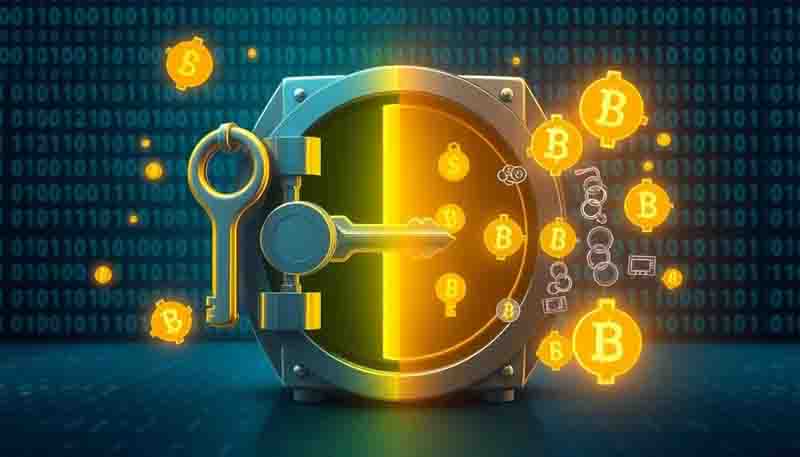
Financial Autonomy Implications
Key ownership differences directly impact your financial autonomy when using custodial or non-custodial crypto wallets.
With custodial wallets, you're entrusting a third party to manage your private keys, limiting your control over your crypto assets. This arrangement may compromise your ability to access funds freely and execute transactions independently.
Non-custodial wallets, on the other hand, provide you with full control over your private keys. This control translates to enhanced financial autonomy, allowing you to manage your digital assets without relying on intermediaries.
You'll have the freedom to:
- Execute transactions at will
- Manage investments independently
- Securely store your crypto assets
Custodial vs non-custodial wallets differ considerably regarding asset control:
- Custodial wallets: Subject to potential risks such as hacks or regulatory changes
- Non-custodial wallets: Empower users with complete ownership and control
Research shows that over 66.5% of cryptocurrency holders prefer non-custodial options, indicating a growing trend towards greater financial autonomy.
Choosing the Right Wallet Type
Selecting the appropriate crypto wallet type is essential for your digital asset management strategy. When deciding between custodial and non-custodial wallets, consider your experience level, desired control over assets, and security needs.
Custodial wallets, managed by third-party providers, offer user-friendly interfaces and recovery options, making them ideal for beginners. Non-custodial wallets, on the other hand, give you full control over your private keys, catering to experienced users who prioritize security and autonomy.
To choose the right wallet type, evaluate these factors:
- Control and responsibility: Custodial wallets require trusting third-party providers, while non-custodial wallets give you sole responsibility for security measures.
- Transaction speed and fees: Custodial wallets may have higher costs and slower transactions due to centralized controls, whereas non-custodial wallets typically offer lower fees and faster on-chain transactions.
- Investment flexibility: Non-custodial wallets allow for diverse investment options without intermediary restrictions, making them suitable for active traders.
Consider your investment strategy, security preferences, and comfort level with managing private keys.
Custodial wallets provide convenience but may be more vulnerable to hacks, while non-custodial wallets enhance security by minimizing third-party risks. Ultimately, your choice should align with your specific needs and experience in the crypto space.
Future Trends in Wallet Technology
Evolving landscape of cryptocurrency wallets is shaping the future of digital asset management. As decentralized finance (DeFi) platforms gain traction, you'll see a growing demand for non-custodial wallets. These wallets offer greater control over your assets and align with the desire for autonomy in the crypto space.
Future wallet technologies are focusing on enhancing user experience through:
- Simplified key management
- Biometric security features
- Seamless integration with decentralized applications (dApps)
You can expect to see more wallets incorporating multi-chain support and interoperability. This will allow you to manage diverse assets across different blockchain ecosystems from a single interface.
Data privacy concerns and security breaches are driving users towards non-custodial solutions. With 66.5% of crypto holders preferring these wallets, you'll benefit from enhanced control and reduced risk of hacks.
Regulatory changes may impact custodial wallet operations, potentially pushing more users to non-custodial options. These wallets offer privacy and independence, aligning with the core principles of cryptocurrency.
As wallet technology advances, you'll have access to more secure, user-friendly, and versatile solutions for managing your digital assets.
Stay informed about these developments to make the best choices for your crypto portfolio.
Frequently Asked Questions
What Is the Difference Between a Custodial Wallet and a Non-Custodial Wallet?
The key difference between custodial and non-custodial wallets lies in who controls your private keys.
With a custodial wallet, a third party manages your keys, offering convenience but less security. You're trusting them with your assets.
Non-custodial wallets put you in charge of your keys, giving you full control and increased security, but also more responsibility.
Your choice depends on your comfort level with managing your own security versus relying on a service provider.
What Is the Disadvantage of Custodial Wallet?
While custodial wallets offer convenience, their disadvantages outweigh the benefits.
You're entrusting your crypto assets to a third party, which exposes you to several risks. These include potential insolvency of the provider, vulnerability to hacking incidents, higher transaction fees, and limited privacy due to KYC requirements.
Additionally, you may face challenges in account recovery if you forget your password. By using a custodial wallet, you're fundamentally surrendering control of your digital assets, compromising the core principles of cryptocurrency decentralization.
Is Coinbase a Custodial or Non-Custodial Wallet?
Coinbase is a custodial wallet. When you use Coinbase, you're entrusting them with your private keys and the management of your cryptocurrencies.
This means you don't have direct control over your assets, as Coinbase holds and secures them on your behalf. While this arrangement offers convenience and user-friendly features, it also means you're relying on Coinbase's security measures and trusting them to protect your funds.
It's important to understand this distinction when choosing a cryptocurrency wallet.
What Is the Difference Between Custodial and Non-Custodial Lightning Wallet?
Imagine having the power to control your digital assets or entrusting them to someone else.
That's the key difference between custodial and non-custodial Lightning wallets.
With a custodial wallet, you're relying on a third party to manage your funds and keys.
It's convenient, but you're giving up control.
Non-custodial wallets put you in charge of your keys and funds, offering more security and privacy.
However, you'll need to be responsible for your own security measures and recovery options.
Conclusion
As you navigate the crypto wallet landscape, remember that choosing between custodial and non-custodial options is like selecting a financial vessel for your digital journey. You'll need to reflect on security, ease of use, and control. Just as a seasoned sailor chooses between a cruise ship and a personal yacht, you must weigh the convenience of custodial wallets against the autonomy of non-custodial ones. Assess your needs, understand the risks, and make an informed decision to safeguard your digital assets effectively.


